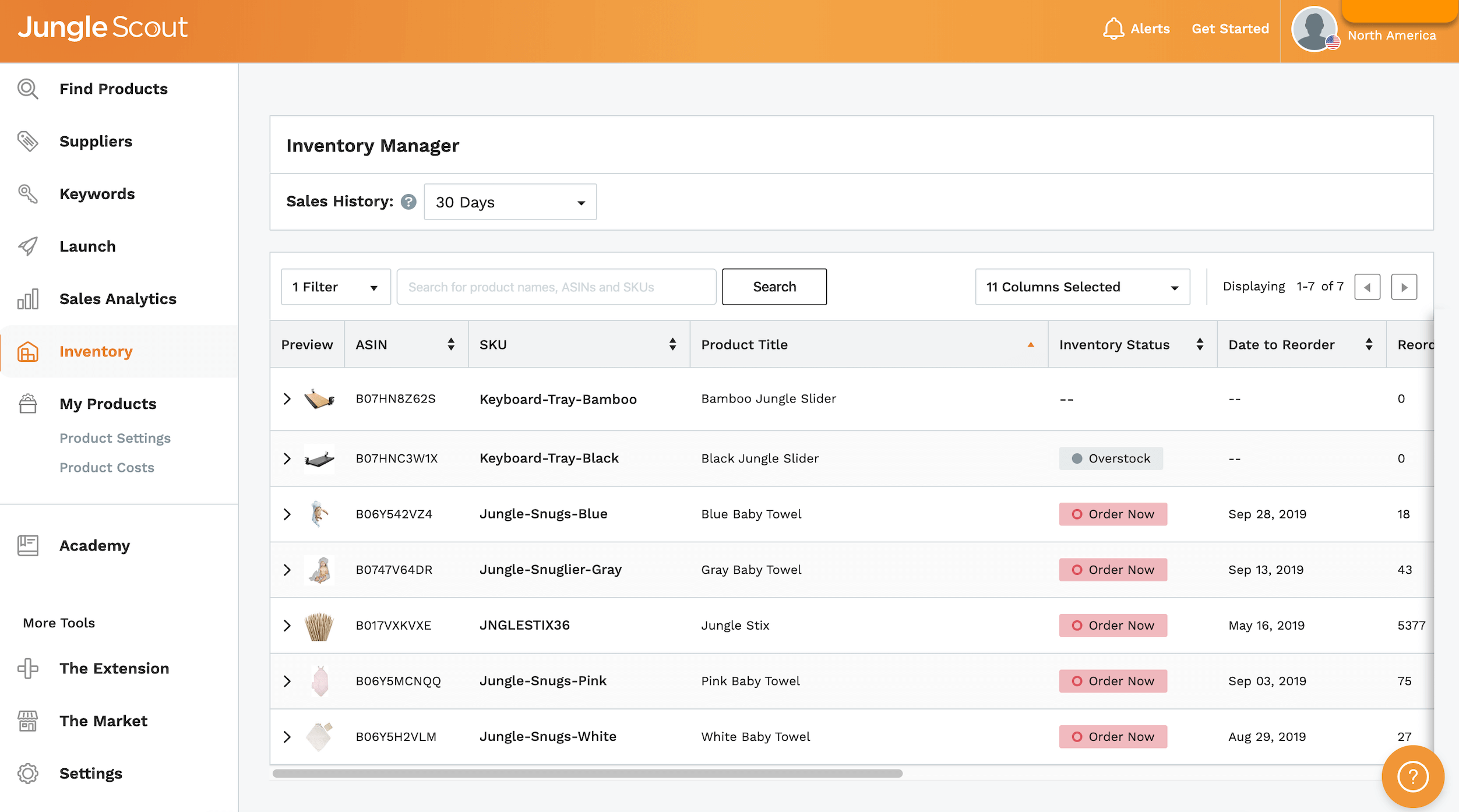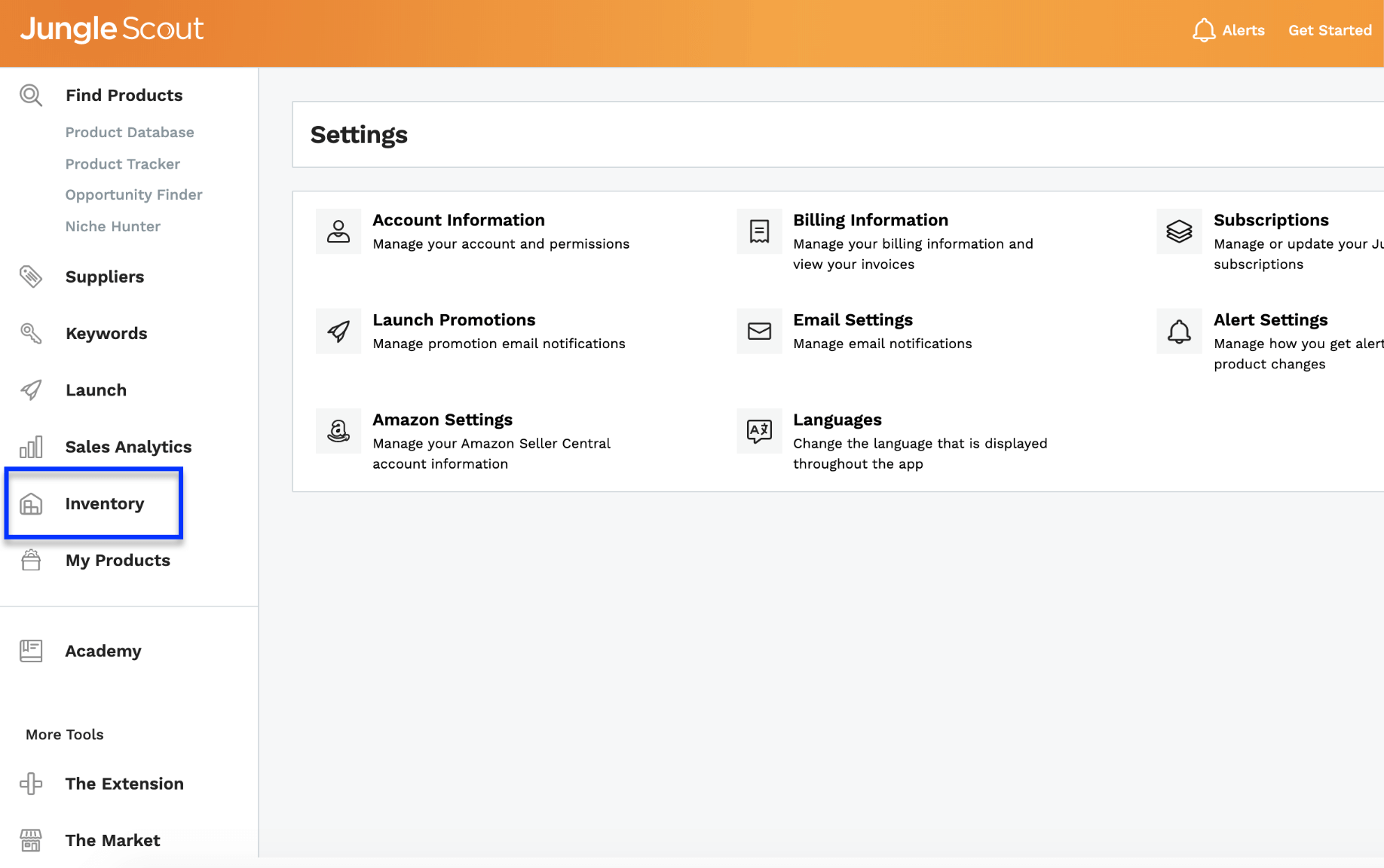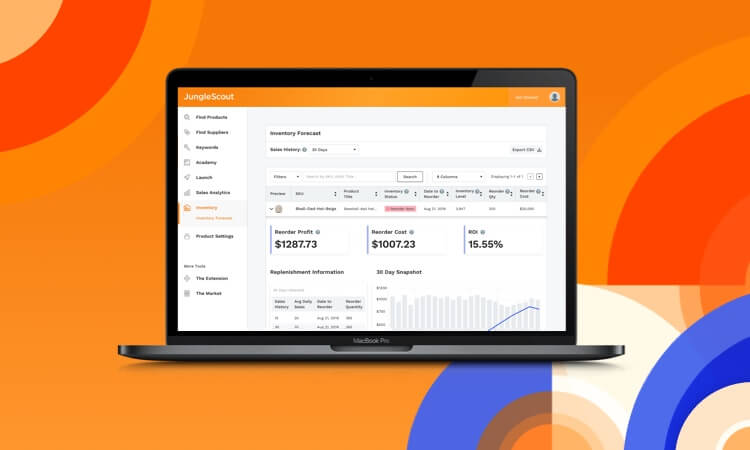Whether you’re a new seller or an experienced seller, managing your FBA inventory is a daunting — yet key — part of running your Amazon business.
As an experienced seller, you want to make sure you place each of your inventory orders at the right time so you don’t run out. Plus, it’s important to order the right quantity; overstocking can be a costly error.
Note: You can make sure you don’t forget extremely important shipping dates (like the last day to send inventory to Amazon before Chinese New Year) by downloading our Amazon Seller Holiday Calendar.
On the other hand, as a new seller, you want to know exactly how many units you should purchase and keep in stock to meet the demands of the market. Running out of inventory can be just as costly as overstocking.
Of course, these aren’t easy calculations. Not to mention, putting all of this data into a spreadsheet can be time consuming, especially if you’re selling multiple products.
Fortunately, there’s now an easy way to manage your Amazon inventory without having to do advanced trigonometry. Introducing Jungle Scout Inventory Manager!
What is Inventory Manager?
Inventory Manager helps Amazon FBA sellers manage their inventory levels efficiently, allowing them to make informed decisions, and mitigate risks such as overordering, underordering, long-term storage fees, and high product costs.
It also calculates your inventory needs, predicts FBA sales and profits, helps you avoid storage fees, and prevents costly stockouts, all so sellers can focus on other crucial elements of their business.
Check out the following video, as I walk through Inventory Manager to show you how it can help power up your business:
How does it work?
Jungle Scout’s Inventory Manager uses advanced-demand forecasting technology to help you run the back end of your Amazon FBA business.
It marks each of your products as Reorder Now, Reorder Soon, Overstock, and In Stock, then calculates the date when you should place the order, as well as the quantity. Inventory Manager also estimates costs and profits.
Here are some of the metrics Inventory Manager displays:
- Status: The status of your current inventory levels.
- Inventory Level: How many units you currently have at Amazon (includes your inbound level).
- Inbound Level: How many units you currently have on the way to Amazon.
- Inventory-Level Cost: The total value of your available inventory.
- Inventory Level Profit: The potential profitability of your available inventory.
- Inventory Level Revenue: The actual sales (in dollars) your current inventory could earn.
- Average Daily Sales: The average number of sales per day for each product.
- Lead Time*: How many days it takes for your product to be manufactured, shipped, and delivered to an Amazon fulfillment center.
- Days Remaining: How many days remaining until you run out of stock.
- Date to Reorder: The latest date to reorder your products, in order to avoid a stockout.
- Reorder Quantity: The recommended number of units you need to order to stay in stock after your order arrives.
- Reorder Cost: How much your next inventory reorder will cost.
- Sales History: The sales history timeframe to be used in calculations. The sales for this date range will be averaged over the number of days to calculate Average Daily Sales.
- Reorder Profit: The potential profit of your next inventory reorder.
- Reorder Days of Supply*: How many additional days of selling you will have after your next inventory reorder arrives.
- Average Profit Per Unit: Your average profit per unit for the sales history you select.
*User input required.

How can Inventory Manager help you?
Inventory Manager has a ton of functions to help any and all sellers, from those just getting started to those on their 1,000th product.
Check out these benefits:
Know your stock status. Are you understocked, overstocked, out of stock, or just right? Based on your lead times and sales, Inventory Manager updates you on your stock’s status for each individual product.
Plan your inventory. Inventory Manager predicts the date you’ll need to reorder your product, helping you to prepare and budget accordingly.
Prevent stockouts. Running out of stock can kill your Amazon FBA product’s status. You can lose your position in Amazon’s search results, and any products your customers had in their cart will vanish. Inventory Manager lets you know (far in advance) when it’s time to reorder, keeping your product right where it belongs!
Stop over ordering. Overordering can result in the loss of start capital that could be earmarked for other business needs. Inventory Manager estimates exactly how many units you’ll need to stay in stock. With this knowledge, you can use your extra dollars to invest in new products.
Avoid storage fees. Too much stock could result in costly Amazon storage fees. With Inventory Manager, you can predict how much inventory you’ll need, and exactly how much to carry within Amazon’s fulfillment network.
Predict future costs. Once you know how many units of inventory you’ll need to purchase, Inventory Manager also tells you what it will cost. That way, you can save and budget for the upcoming purchase.
Forecast sales and profits. While Sales Analytics shows you what you’ve made and are currently making with your products, Inventory Manager gives estimates on future profits thanks to the Reorder Profit, Inventory Level Revenue, and Profit columns.
Let the countdown begin. Taking into account your daily sales average, Inventory Manager shows you how many days you have remaining until you’re out of inventory. This prevents you from stock shortages, protecting your product’s position on Amazon’s search engines.
How to get started with Inventory Manager
Inventory Manager is a feature of Jungle Scout. To access it, log in to Jungle Scout and click the “Inventory” icon on the left toolbar.

From there, if you haven’t already, you can enter your costs, lead times, and re-order days of supply. You’ll also get a snapshot of how your inventory has been performing.
And you can do all this directly through Inventory Manager, or in your Product Settings menu.
Inventory Manager is an incredibly useful tool that can help you save money, stay in stock, and earn more profit; so, if you aren’t using Jungle Scout at this point and want to learn more, be sure to check out our subscription options.

 No Comments
No Comments